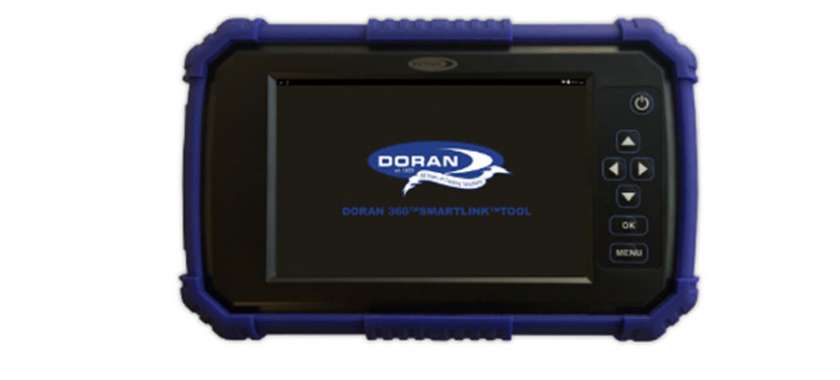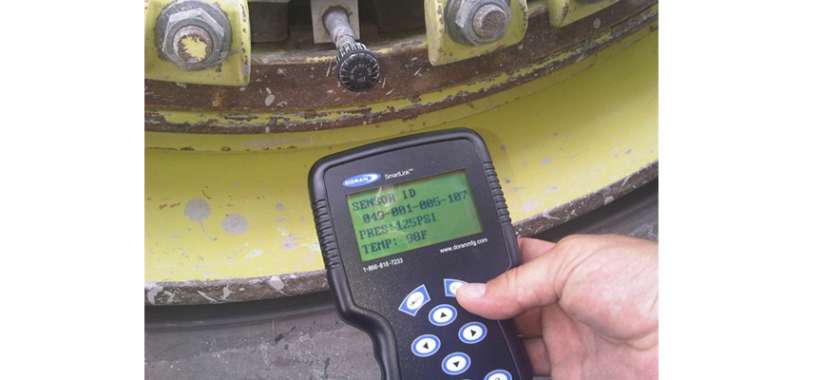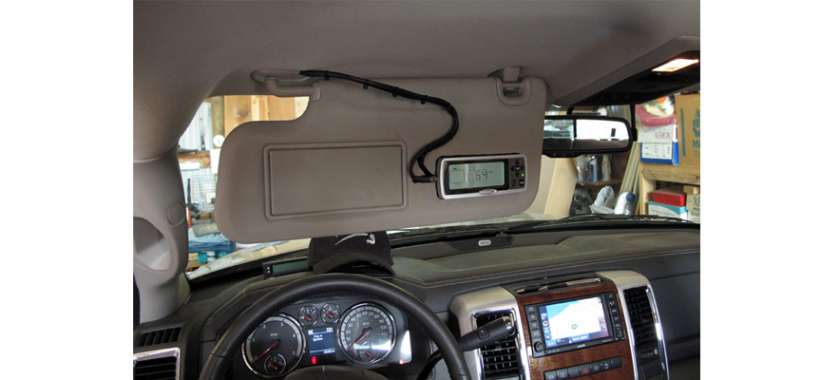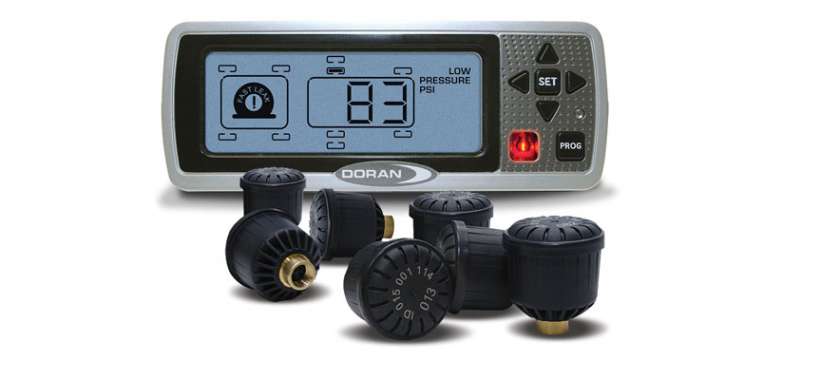




Due to leakage and seasonal temperature changes, all tires leak air naturally, and over a period of time, a typical new tire can lose between 3 and 9 psi. Driving with under-inflated tires could result in tire failure as well as tread wear thus leading to reduced tire life. Tire pressure monitoring systems help in maintaining air pressure in the tire.
A tire pressure monitoring system or TPMS is an electronic system for monitoring air pressures in OTR tires with valve-stem mounted large bore tire pressure sensors. These tire pressure sensors transmit RF signals to a digital monitor/display located in the cab. Wheel positions are programmed into the display with a customizable baseline tire inflation pressure setting for each tire.
We facilitate a tire pressure monitoring system (TPMS) with sensor and monitoring technology that is designed to take readings of the air pressure inside pneumatic tires on various types of vehicles. TPMS communicates real-time tire-pressure data to the driver of the vehicle and provides low-pressure alarms.
We deliver to several industries, including heavy-duty (Mining, Logging, Construction, Agriculture), trucking, bus, RV, trailer, and many specialized application markets.
Tire pressure monitoring systems are of two styles: direct and indirect. Both give indications of when a tire is underinflated, but they go about it in two very different ways.
Indirect Tire Pressure Monitoring Systems
Indirect tire pressure monitoring systems, such as the ones in some new automobiles, do not measure tire pressure. They monitor individual wheel speeds and other signals available in the vehicle then compare tire rotations—an under-inflated tire has a slightly smaller diameter than a correctly inflated tire and therefore rotates more times to cover a specific distance.
Direct Tire Pressure Monitoring Systems
Direct Tire Pressure Monitoring Systems (TPMS), such as the Doran 360™ series of tire pressure monitors, use pressure sensors located on each wheel’s valve stems to directly measure the pressure in each tire. These sensors broadcast pressure data via a wireless radio frequency transmitter to a central receiver. The data is analyzed and the results sent to a display mounted inside the vehicle.
Features:
Quick Installation and Simple Programming:
It is expected to take approximately 60-90 minutes. Installation involves proper valve stem maintenance, providing a 24v power monitor/display, and external antenna mounting.
Sensor Design and Construction:
The large bore tire pressure sensors are built with a unique and extremely durable three-piece seal that provides consistent pressure on the valve core while minimizing the potential for leaks
Off-Vehicle Data Communication Integration:
The system can be integrated to third party telematics providers to transmit tire pressure / temperature data and alarms off equipment through RS232, J1708, and J1939 data protocols
Wireless Digital Tire Checks:
Tire pressure sensors will wirelessly transmit digital tire pressure/temperature data using the handheld SmartLink™ tool. With this feature, the SmartLink™ tool can be used to activate a tire pressure sensor and transmit the current data back to the SmartLink™ tool for viewing. This enhancement provides a simple, fast, and accurate method to obtain tire pressure and temperature readings during tire checks without having to climb into the cab of the vehicle to view the pressures on the monitor.

